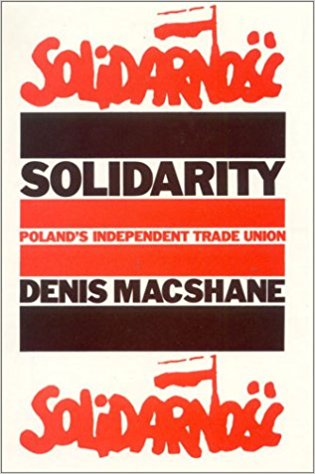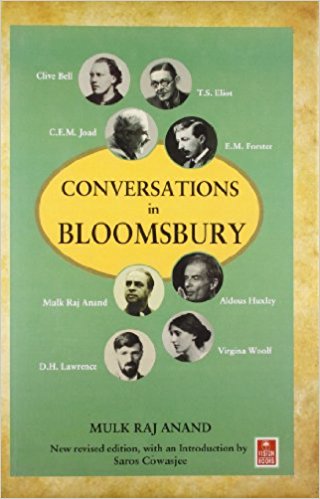This collection of essays brings together the efforts of twenty-four Indian scholars belonging to a wide spectrum of socio-economic disciplines. They have attempted to ana¬lyse systematically the prob¬lems in the field of urban and regional planning and deve¬lopment. The selections have been carefully made to present a clear picture of emerging urban problems in India.
Archives
July-August 1982 . VOLUME 7, NUMBER 1A couple of years ago this reviewer read and reviewed Christoph Von Furer-Haimendorf’s book on the Apa Tanis, A Himalayan Tribe—From Cattle to Cash. Another book by him on tribes of the same region following so soon excited one, but the tone of this book is quite different from the earlier one. This work deals with the tribes who surround the Apa Tanis, i.e., the Nishis and Monpas, and forms part of a comprehensive project of anthropological research among Indian tribal populations, as the author explains in the preface.
The book under review is a significant contribution to the study of Indian elections as well as Indian politics. It brings a whiff of fresh air into the hothouse atmosphere pre¬valent in the discipline of political science in this coun¬try. Mrs. Kaushik not only identifies the limitations of the election studies conducted during the last fifteen years but also offers an alternative approach for understanding the phenomenon of elections and electoral politics.
I have often said, verbally and in print, that India’s cosy reliance on English as our access to international academia has effectively blinded us to work of excellence in other foreign traditions of scholarship while not, in com¬pensation, encouraging excel¬lence locally.
In assembling together Essays on Linguistics: Lang¬uage Systems and Structures the Soviets seem to recognize this. This is not just a ran¬dom sampling of Soviet research output in linguistics, nor, more significantly, is there a specific focus on any one area of linguistics.
At the close of this study of the Afghan crisis, the reader may be forgiven if in the pro¬cess of unscrambling images of elite perceptions, he is con¬fused about Sen Gupta’s own perspective. The author com¬pounds the confusion by adopting such non-neutral, American conceptualizations as the ‘arc of crisis’ or esp¬ousing the argument of the Soviet Union’s strategic parity with—indeed, edge over the US and its overwhelming military advantage in South Western Asia, sliding over the vested US interests in push¬ing this thesis.
This volume is the outcome of a seminar held in 1976 at the Institute of Social and Eco¬nomic Change in Bangalore on the ‘Data Base of the Indian Economy’, and is fourth in the series under the joint auspices of the Indian Association for the Study of Population and the Indian Economic Society.
The contributors of the thirteen articles, contained in this book explore the pro¬blems associated with reaching the benefits of develop¬mental programmes to the poorer sections of societies in Asia, Latin America and Africa. The changes necessary in structure and process of, government are identified, and the implications of such changes in the concepts and practices of planning are analysed. The corresponding need for reorienting research and training at the manage¬ment institutions operating in these regions is indicated.
Academic dissent often pushes the dissenter into ex¬treme positions. Critiques are presented as new paradigms, and the neo-converts tend to adopt the new concepts with uncritical faith as staunchly as the die-hards refuse to accept that there is anything wrong with the existing theories. When the Gross National Pro¬duct fortress crumbled, the world was presented with the Physical Quality of Life Indi¬cator.
In 1921, the 10th Congress of the Bolshevik Party succeeded in choking a young voice—the voice of the Workers’ Opposition, a small group inside the party which called for direct control of workers over industries, introduction of a more egalitarian policy in wages, freedom of criticism for the workers, fight against bureaucratic party administra¬tors and recognition of the creative initiative of the proletariat.
Two phenomena have char¬acterized the Indian rural scene since the ’70s—peasant militancy and violence against Harijans. The Delhi University Political Science Association felt the urgency of the need to evolve a new Political Economy to meet the challenge posed by the failure of existing social science theory, both Marxist as well as non-Marxist, to satisfactorily explain the twin phenomena.
Another reviewer, Profes¬sor A.H. Wilson, has predicted that this work ‘of seasoned scholarship’ by K.M. de Silva, whom he has dubbed ‘the wizard of Peradeniya’, ‘will for many years to come be the last word on the subject’, and hoped that ‘there will be more detailed interpretation of men and affairs from so magisterial a pen’. The term has doubtless not been used in a pejorative sense, but wizardry has no place in a work of seasoned scholarship or in the repertoire of a serious historian. Sancti¬fying myth is another matter.
There is no better way in which a reviewer can introduce this book than by quoting Indira Gandhi’s observation in the foreword: ‘Subhas Kashyap’s book gives the non-specialist reader easy access to the original material and Jawaharlal Nehru’s ideas and words’. As to giving easy access to Nehru’s words, Indira Gandhi is dead right: out of 397 pages, 288 pages contain excerpts from Nehru’s writings and speeches.
If the history of science and technology in India has yet to produce a work of the stature of Joseph Needham’s writings on China, there have nevertheless been a number of recent publications, each taking re¬search on the theme a step forward: P.K. Gode’s three volumes on Studies in Indian Cultural History, published between 1961 and 1969, the Indian National Science Academy’s A Concise History of Science and India (New Delhi, 1971), M.G. Dikshit’s History of Indian Glass, (Bombay, 1968), and somewhat more re¬cently, Claude Alvares’ Homo Faber: Technology and Culture in India, China and the West, 1500-1972 (New Delhi, 1979), to name only a few.
The theme of this book is essentially a discussion of what is often referred to as the second urbanization of India, the first being the rise of the cities of the Indus valley and its environs in the third millennium B.C. Thakur’s study is substantially that of the Ganges valley and covers a period of about a thousand years, from the mid-first millennium B.C. to the latter half of the first millen¬nium A.D. There is little of substance on the contemporary cities of the far north or of the south of the subcontinent.
I heard someone at a party remark of this book, ‘It is superb as long as Mulk keeps himself out of it.’ On reading it, I find I don’t agree at all: Dr. Anand has nothing to add to, and no fresh insights to bring to our considerable knowledge of the Bloomsbury Group, gleaned from their voluminous diaries, journals, letters and biographies; there is probably no other period in the history of English litera¬ture so thoroughly documented or so well served by its biogra¬phers and editors.







